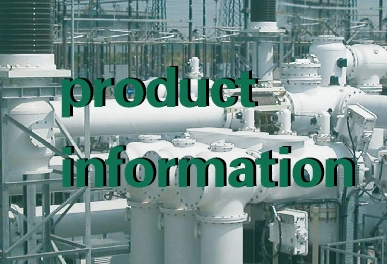Sulfur Hexafluoride (SF6) is a colorless, odorless, non-toxic, non-flammable, and stable gas with excellent electrical insulation and arc extinguishing properties. Its electrical insulation capacity is 2.5 times that of air or nitrogen, and its arc extinguishing capability is 100 times that of air. Due to its stable chemical properties, SF6 is widely used as an insulating gas and is commonly found in equipment such as SF6 relays and SF6 transformers. SF6 has become the new generation of insulating medium after insulating oil, and it is widely used in power equipment due to its excellent insulation and high-pressure resistance characteristics.
Necessity of Detecting SF6 in the Power Industry
In the power industry, SF6 gas is primarily used for arc extinguishing and insulation in medium and high voltage switches, which can significantly save space and reduce maintenance costs. However, although SF6 gas is non-toxic under normal conditions, it decomposes into toxic substances such as hydrogen fluoride (HF) and sulfur dioxide (SO₂) under the action of high voltage arcs. These decomposition products can be fatal even in small quantities.
When SF6 gas leaks, its decomposition products can accumulate in low-level indoor spaces, leading to local hypoxia and a toxic environment, severely threatening the safety of workers. Therefore, using SF6 gas density monitoring devices in power distribution rooms and substations is crucial.
Application of SF6 Gas Density Monitoring Devices
To address the risk of SF6 gas leakage, the power industry adopts high-precision SF6 gas density monitoring devices. These devices are usually based on infrared principles and have the following characteristics:
High-precision infrared detection: Using imported high-quality infrared light sources to ensure detection accuracy.
Fast response: Capable of quickly detecting changes in gas concentration.
Strong anti-interference ability: Can maintain stable operation in complex environments.
Long lifespan and high stability: Suitable for long-term use with low maintenance costs.
SF6 gas density monitoring devices can monitor SF6 gas concentration in real-time, ensuring the safe operation of power equipment and protecting workers' health.
Due to its excellent insulation and arc extinguishing performance, sulfur hexafluoride is widely used in the power industry. However, its decomposition products are toxic, so high-precision SF6 gas density monitoring devices must monitor it in real-time to ensure safety.
Furthermore, as technology advances and environmental awareness grows, the power industry's use and management of SF6 gas have become increasingly stringent. To reduce SF6 emissions and leaks, the power industry is actively developing more environmentally friendly alternative gases and improving equipment design to enhance sealing performance.
At the same time, for the SF6 gas already used, the power industry has strengthened its recycling and handling efforts. By using specialized recycling equipment and technologies, leaked SF6 gas is recycled and reused to reduce environmental pollution.
Moreover, the power industry has enhanced the training and education of its staff, raising their safety awareness and operational skills. Through regular safety drills and emergency response training, workers can quickly and accurately take measures in emergencies involving SF6 gas leakage to ensure their safety and those around them.
In conclusion, while sulfur hexafluoride has broad application prospects in the power industry, it also faces challenges in terms of environmental protection and safety. The power industry will continue to strive through technological innovation and management improvements to ensure the safe, efficient, and environmentally friendly use of SF6 gas.
Related Article for Reference
Features of SF6 Gas Density Monitoring System
SF6 GasDensity Monitoring System is a critical component in the modern industrial field and plays an important role in power systems.High AccessibilitySF6 GasDensity Monitoring System adopts the commu...
Fri 10 2023







